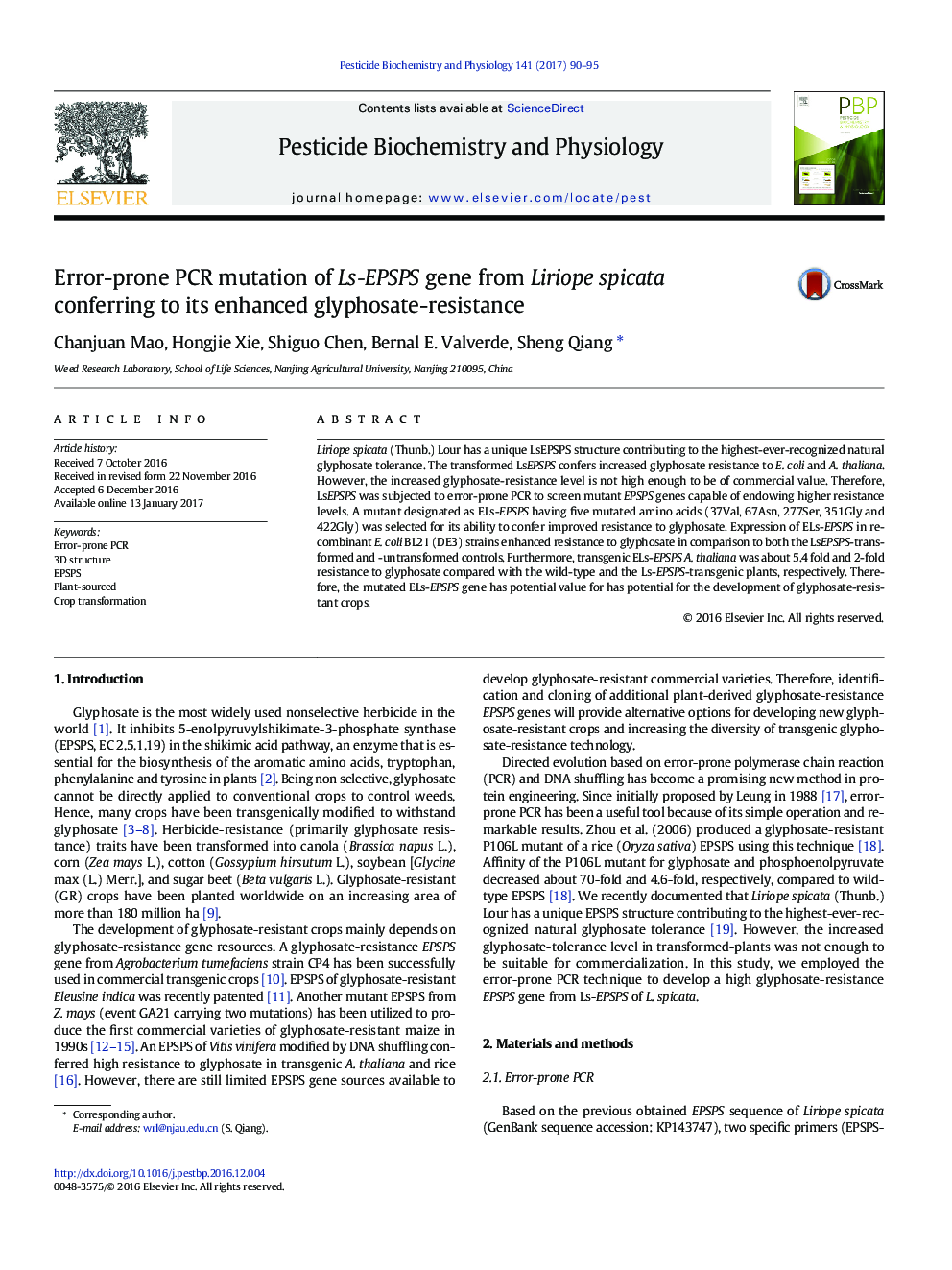| Article ID | Journal | Published Year | Pages | File Type |
|---|---|---|---|---|
| 5514828 | Pesticide Biochemistry and Physiology | 2017 | 6 Pages |
â¢Error-prone PCR was conducted to produce mutated plant-derived EPSPS endowing high glyphosate resistance.â¢ELs-EPSPS with five mutated amino acids was obtained by error-prone PCR.â¢It endowed 5.4 fold higher glyphosate-resistance.
Liriope spicata (Thunb.) Lour has a unique LsEPSPS structure contributing to the highest-ever-recognized natural glyphosate tolerance. The transformed LsEPSPS confers increased glyphosate resistance to E. coli and A. thaliana. However, the increased glyphosate-resistance level is not high enough to be of commercial value. Therefore, LsEPSPS was subjected to error-prone PCR to screen mutant EPSPS genes capable of endowing higher resistance levels. A mutant designated as ELs-EPSPS having five mutated amino acids (37Val, 67Asn, 277Ser, 351Gly and 422Gly) was selected for its ability to confer improved resistance to glyphosate. Expression of ELs-EPSPS in recombinant E. coli BL21 (DE3) strains enhanced resistance to glyphosate in comparison to both the LsEPSPS-transformed and -untransformed controls. Furthermore, transgenic ELs-EPSPS A. thaliana was about 5.4 fold and 2-fold resistance to glyphosate compared with the wild-type and the Ls-EPSPS-transgenic plants, respectively. Therefore, the mutated ELs-EPSPS gene has potential value for has potential for the development of glyphosate-resistant crops.
Graphical abstractDownload high-res image (97KB)Download full-size image
